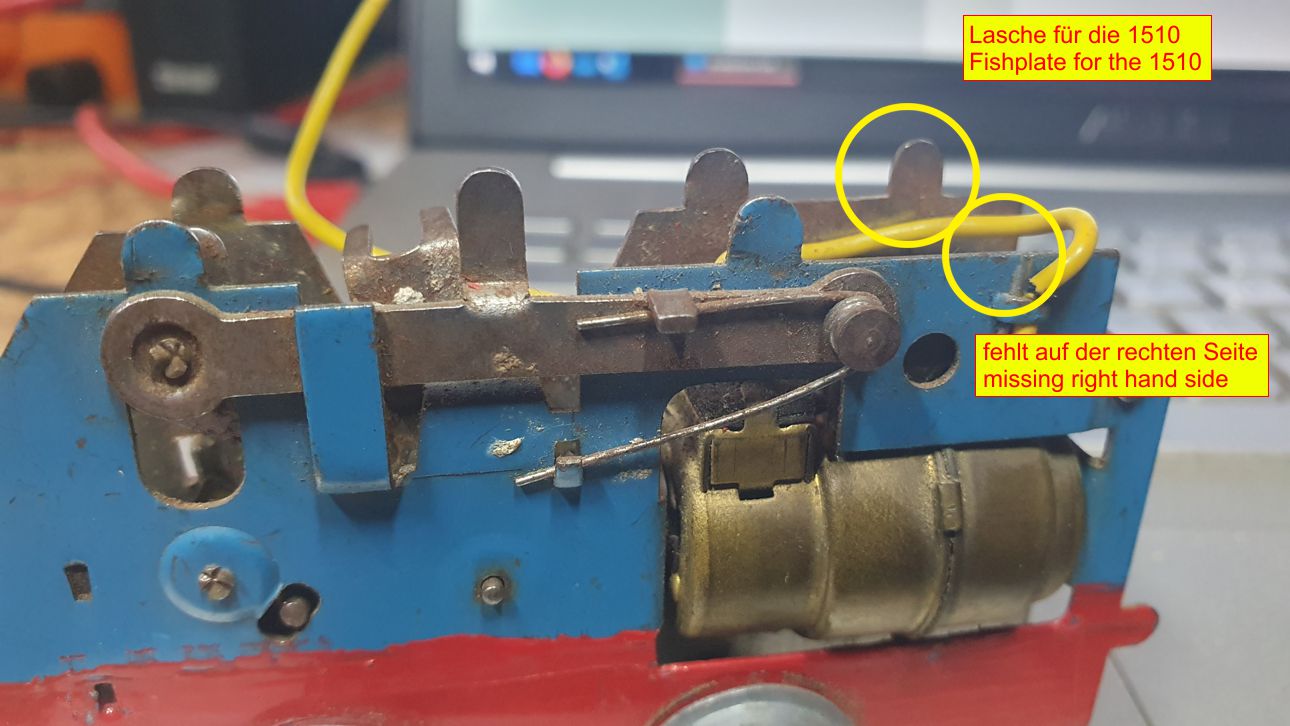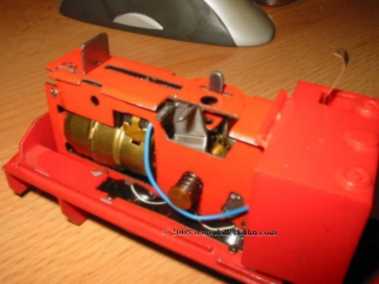|
Locomotive Battery Motors |
|
| The Gebr. Bühler company also produced - besides the clockworks - most of the battery motors for Biller toys. Advertising from 1954. | |
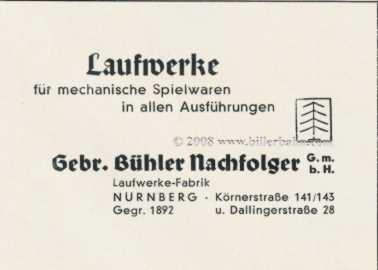 |
|
| The 1st battery-driven 4,5 Volt motor. On principle same construction as the clockwork. On this picture you clearly see the three fixation points for forward / neutral / backward operation. | However, the angular switch-arm - outside frontward at the clockwork - is now positioned internal backward. |
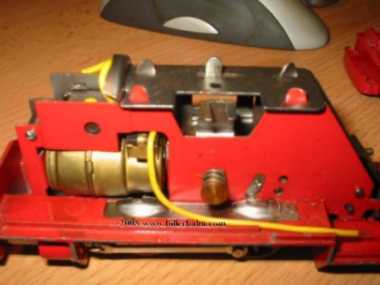 |
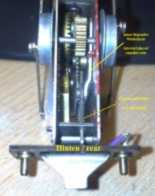 |
| also available in Blue - at the 1020 E, 1500 E und 1501 E | and in Blue-Red - as shown on this mirror image - and NOT an individual case !!! On this motor a red and a blue tin were manufactured - and the bottom section of the blue tin was later hand-painted in Red. |
 |
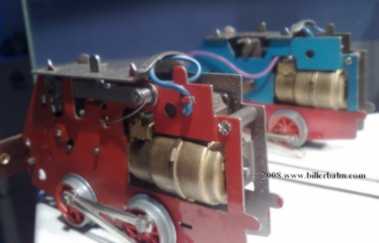 |
|
obviously as a test Biller also issued yellow motor covers - seen at a 1500 and now on this 1510. Possibly the yellow colour around the wheels was considered too "fancy" - and they changed it again by hand. All these motors, which were produced until 1966, had the plate-shaped switch - theoretically |
The engine for the 1500, 1501 sheet metal steam locomotive and 1020 E diesel locomotive |
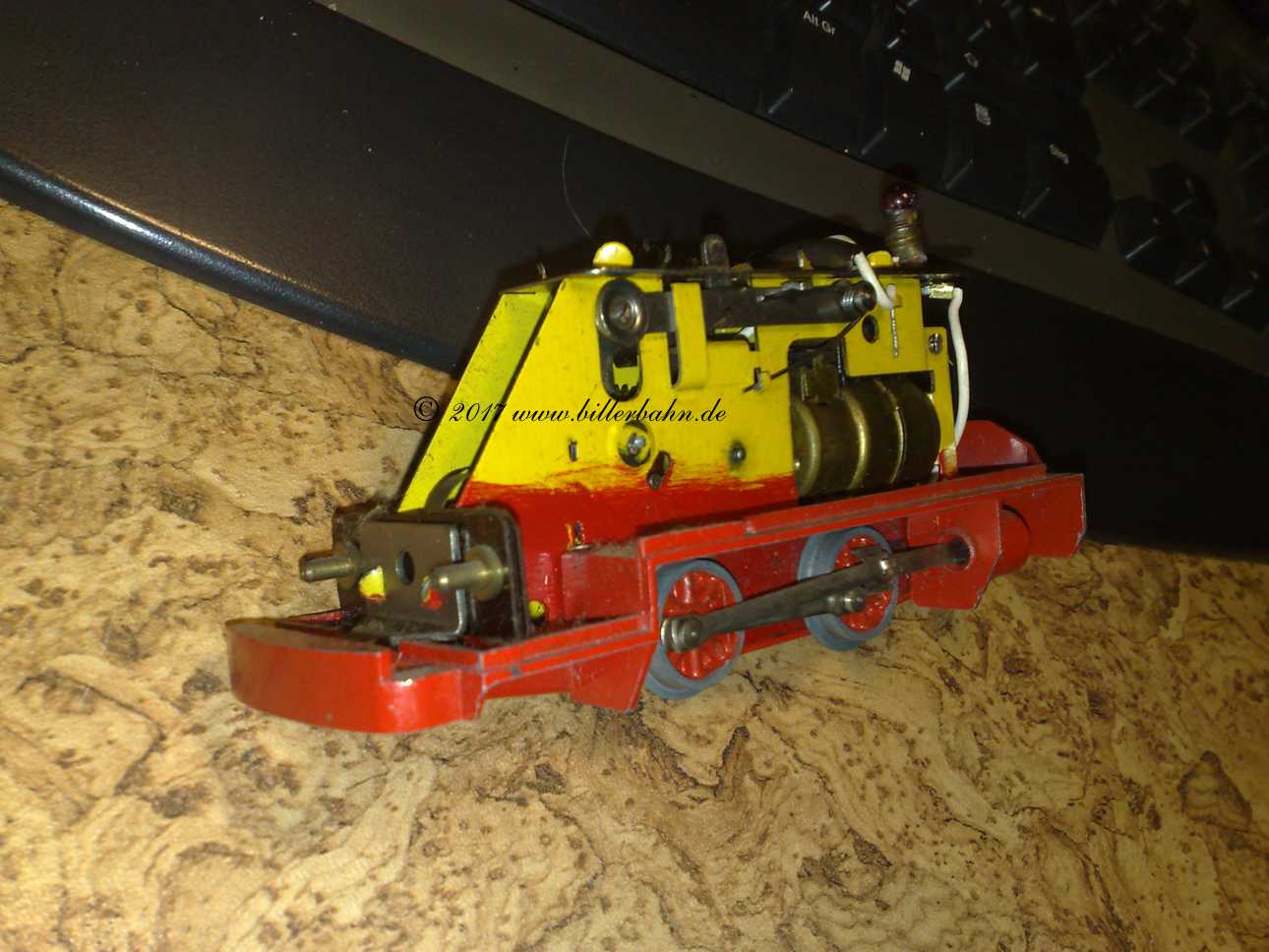 |
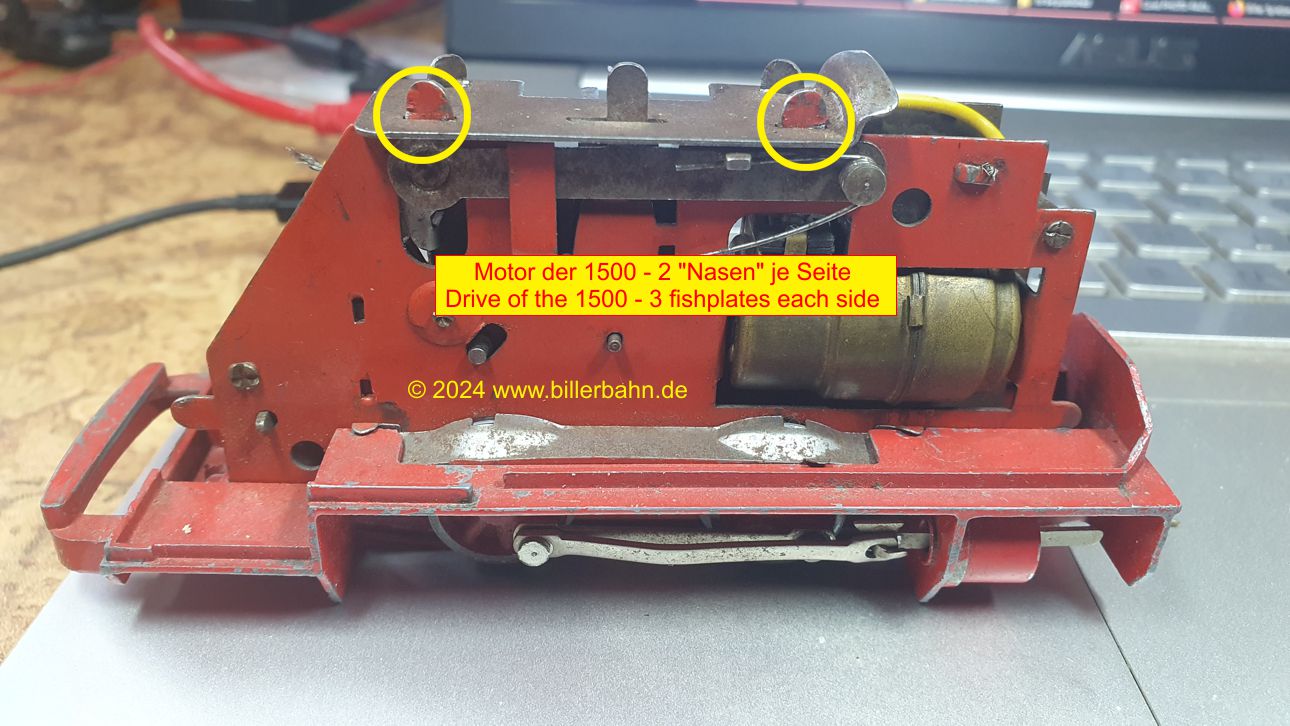 |
| In contrast, the engine to a cloud of smoke -1510 | And finally an engine housing.... |
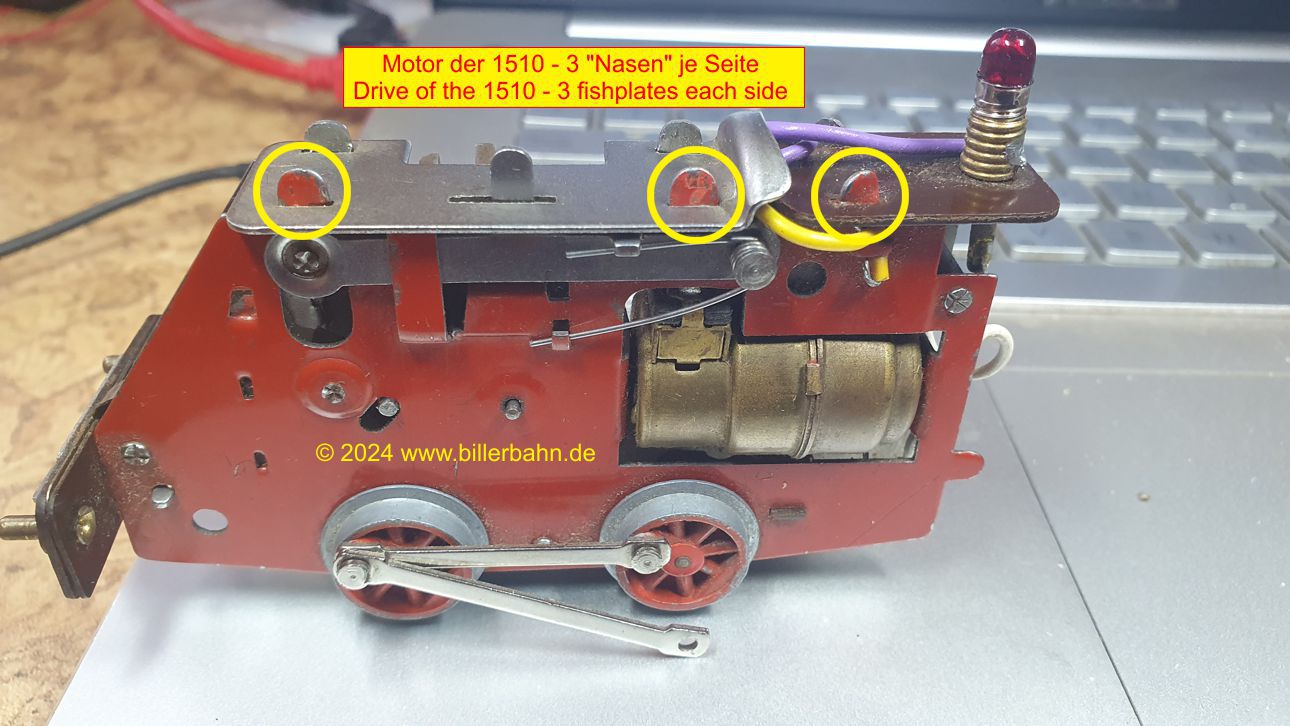 |
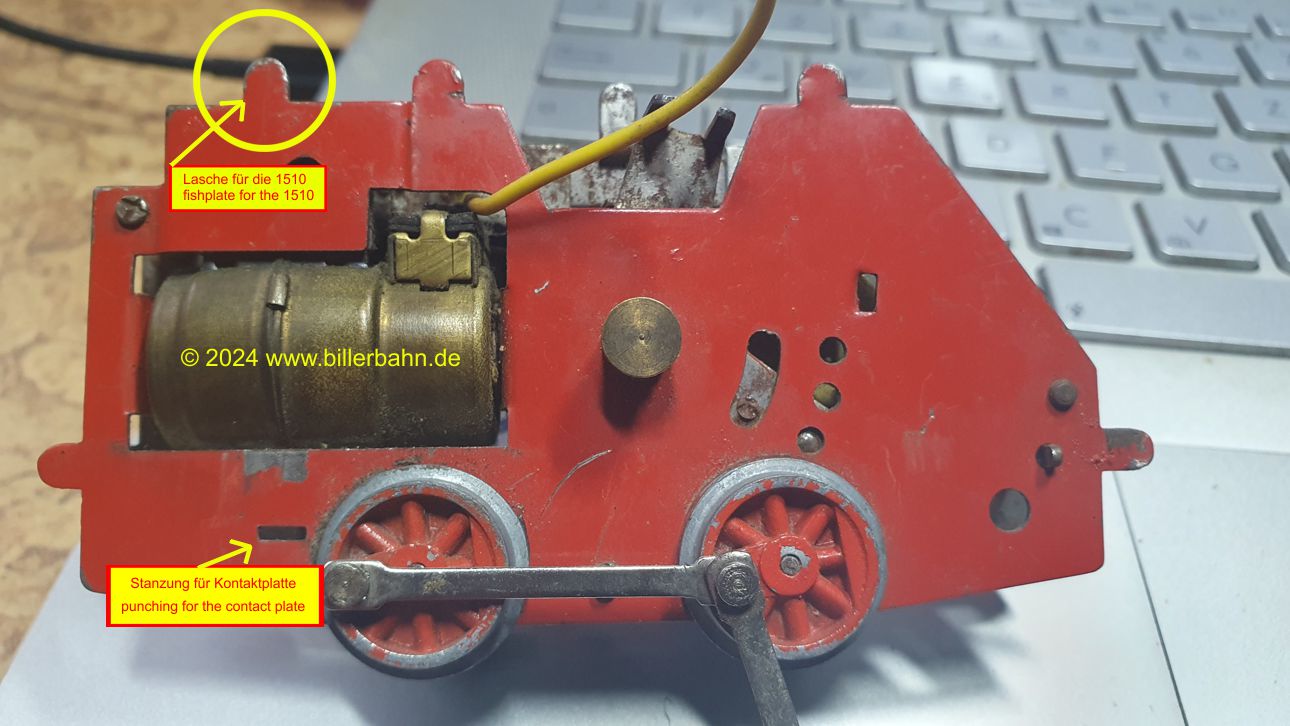 |
| ... which has the sheet metal of a 1510 on the left and that of a 1500 on the right. And this is not an isolated case either. | |
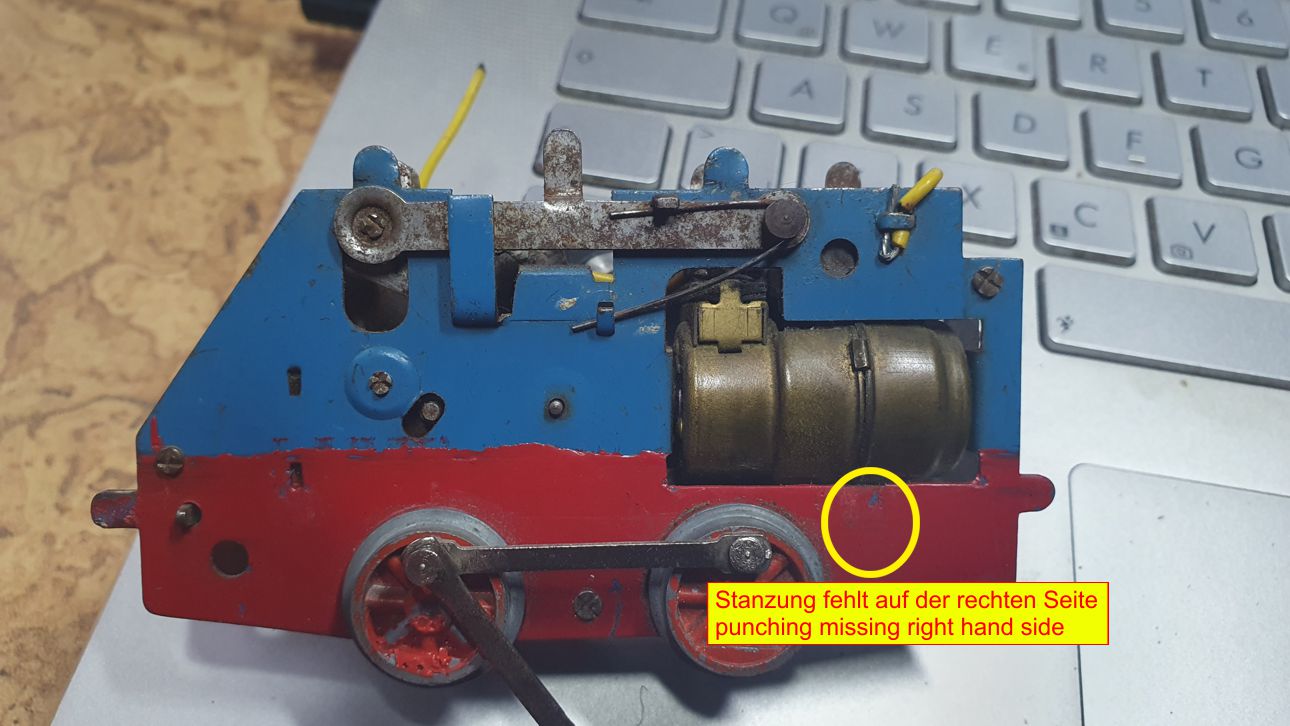 |
|
| Battery motor covers were NEVER available in dark- or bright green | |
| on ALL black and green tin steam locos the plate-shaped switch with 18 mm guiding spike was used. | Plate-shaped switches in a on-top-view: 2nd left for the 1500 E and 1510 E, right side fort he bright-blue - orange 1013 E respectively 013. |
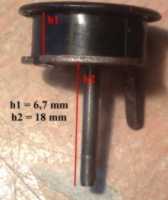 |
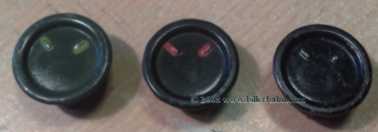 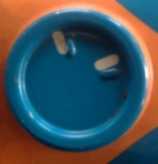 |
| 1962, as the 1550 was issued, the motor construction was essentially changed. The slant at the rear "vanished", the top clockwork cover was straight - the bolt including the spring was no longer necessary and was omitted as well. This cutaway-model shows the motor with flat switch. It also fits the after 1966 produced cog wheeled switch with a 9 mm displacement - and the later available switch with "normal" approx. ca. 6,5 mm displacement. | Upon implementation of the 1013 Diesel in 1966 it was necessary to create a new, higher switch. Result was the cog wheeled switch with 9 mm displacement. An additional tin-angle - fixed at the front fishplates of the top cover, the installed hood gave the necessary pressure to fix the motor in the frame. |
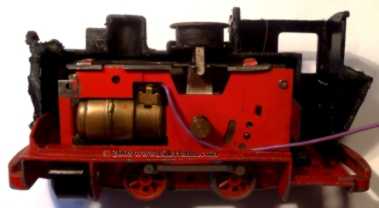 |
|
| Until somebody realised, that the locos with the 9 mm switch do not pass through the 017 engine shed. So the displacement was reduced to 6,5 mm. | as well in black - for the plastic steam locos and the coloured Diesels - 18 mm guiding spike. In case of a 15 mm guiding spike the at the clockworks described distance washers were used as well - sometimes two can be found. |
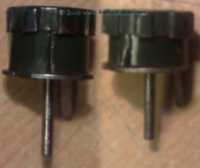 |
 |
| And some day after 1966 the old Bühler brass motor was replaced by the silver version. The silver motor has a larger diameter - and that's the point at which the frames with angled cut-out were created. For the steam loco 1550. All 3 versions of the switch fit on this motor - even though the flat switch shouldn't be used anymore. | Silver motor installed in a Diesel frame. You can see the on-top axle-cover - as to be expected the above listed loco. Motor side tins seldom without - mostly with the already mentioned matrix dotting. |
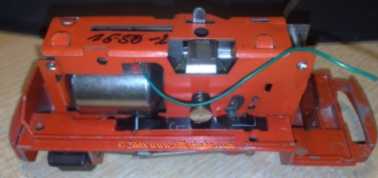 |
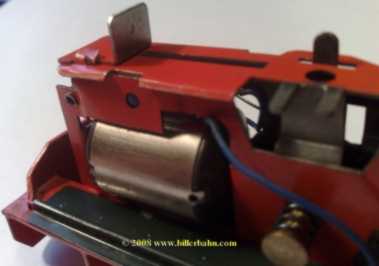 |
|
|
|
|
However - most of the collectors and "gamblers" have realised that many of the above listed versions are theory - and Biller, especially during the period of changes from old to the newer switch, delivered all sorts of hodgepodge. But that was of no interest to seller and customer - main issue was to play. |
|
|
generated Christmas 2008 |
last update: Weihnachten 2024 |
